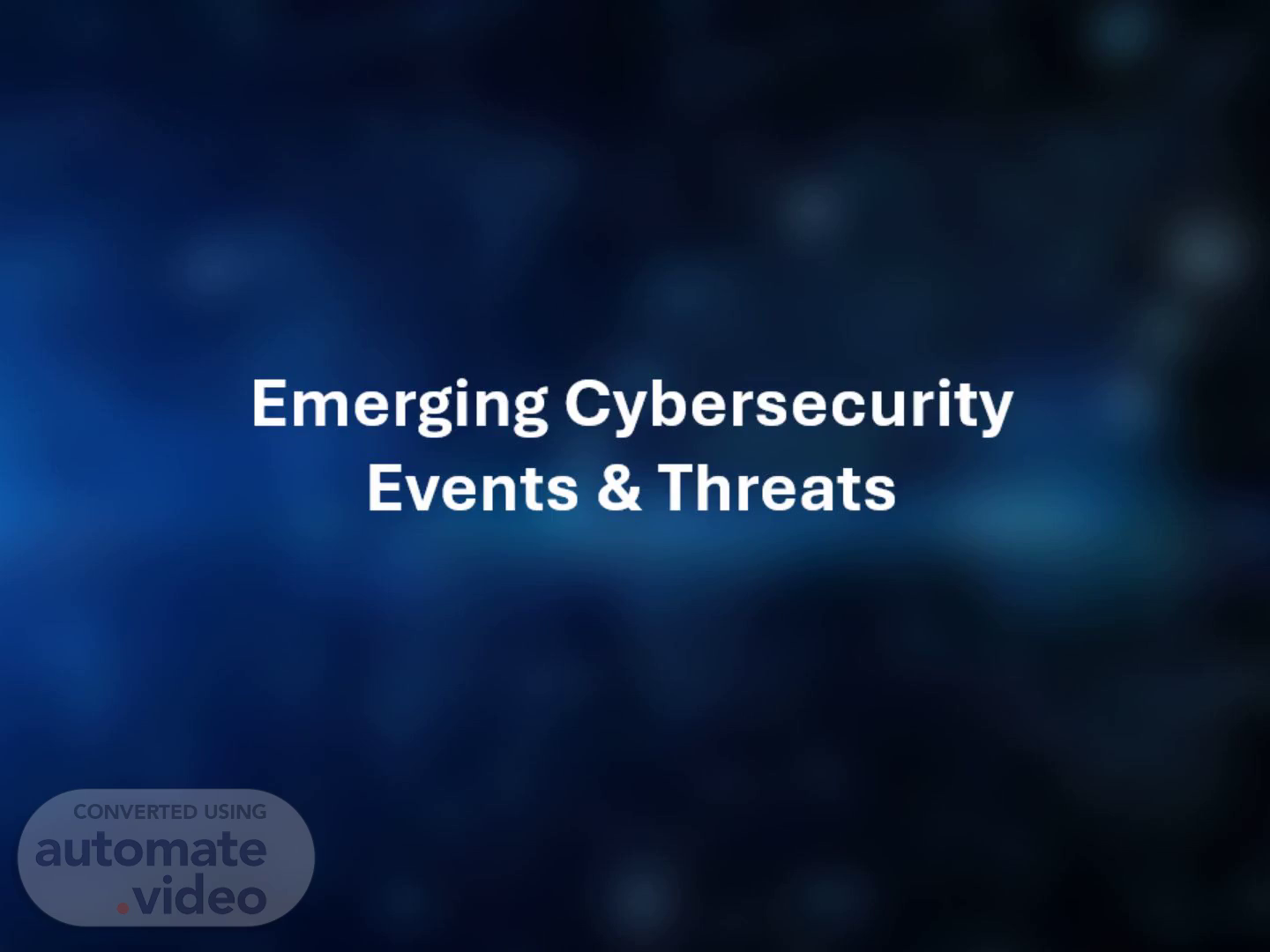Scene 1 (0s)
[Audio] Welcome to this session on emerging cybersecurity events and threats. In today's digital landscape, threats are becoming more sophisticated and targeted. From highly personalized phishing attempts to advanced malware and artificial intelligence-driven attacks, it's critical to stay informed and prepared. This presentation will walk you through the most prominent and evolving cyber threats today, including how they work and what you can do to defend against them. Let's begin by looking at targeted phishing and whaling attacks..
Scene 2 (34s)
[Audio] Spear phishing and whaling are highly targeted cyberattacks. Unlike traditional phishing, spear phishing uses personal information to craft believable messages tailored to specific individuals. Whaling goes a step further, focusing on high-level executives and mimicking urgent business requests—like a fake email from the CEO asking for a wire transfer. These attacks can be very convincing. The best defense is caution: always verify unusual requests through a different channel and never click suspicious links or download unexpected attachments..
Scene 3 (1m 10s)
[Audio] Ransomware is a devastating threat that locks or encrypts your files and demands payment for their release. A growing trend is double extortion, where attackers not only encrypt data but also steal it—threatening to leak it if no ransom is paid. Recovery can be difficult and costly. To stay protected, always back up your files regularly, keep software updated, and avoid opening attachments from unknown sources. Awareness and preparation are your strongest defenses..
Scene 4 (1m 41s)
[Audio] Zero-day vulnerabilities are security flaws that are unknown to the software vendor and exploited before a fix is available. These can exist in your operating system, web browser, or network devices. Because there's no patch at the time of the attack, these threats are especially dangerous. To reduce your risk, enable automatic updates on all systems and monitor official security advisories. Quick action is key when a patch becomes available..
Scene 5 (2m 10s)
[Audio] Mobile phones and smart devices like cameras, TVs, and thermostats can be vulnerable entry points. Many of these devices come with weak or outdated security settings. Common risks include malicious mobile apps or hackers taking control of smart devices. To protect yourself, avoid installing apps from unknown sources, change default passwords, and regularly update device firmware. These steps help ensure that convenience doesn't come at the cost of security..
Scene 6 (2m 41s)
[Audio] Deepfakes use artificial intelligence to create realistic fake videos and voice recordings. This new wave of social engineering—called Social Engineering 2.0—can deceive employees into taking harmful actions, like transferring funds or sharing sensitive data. If you receive an unexpected video call or voice message requesting something unusual, always verify it through a separate, trusted method. Combine vigilance with strong security practices like multi-factor authentication to minimize your risk..
Scene 7 (3m 15s)
[Audio] Cyber threats will keep evolving, and so must our defenses. Awareness is your first line of protection. Always stay alert for unusual requests, suspicious links, or unfamiliar software. Follow your organization's cybersecurity policies closely, and don't hesitate to report anything that seems off. Remember—everyone plays a role in keeping our digital environment safe. Stay informed, stay cautious, and most importantly—stay secure..
